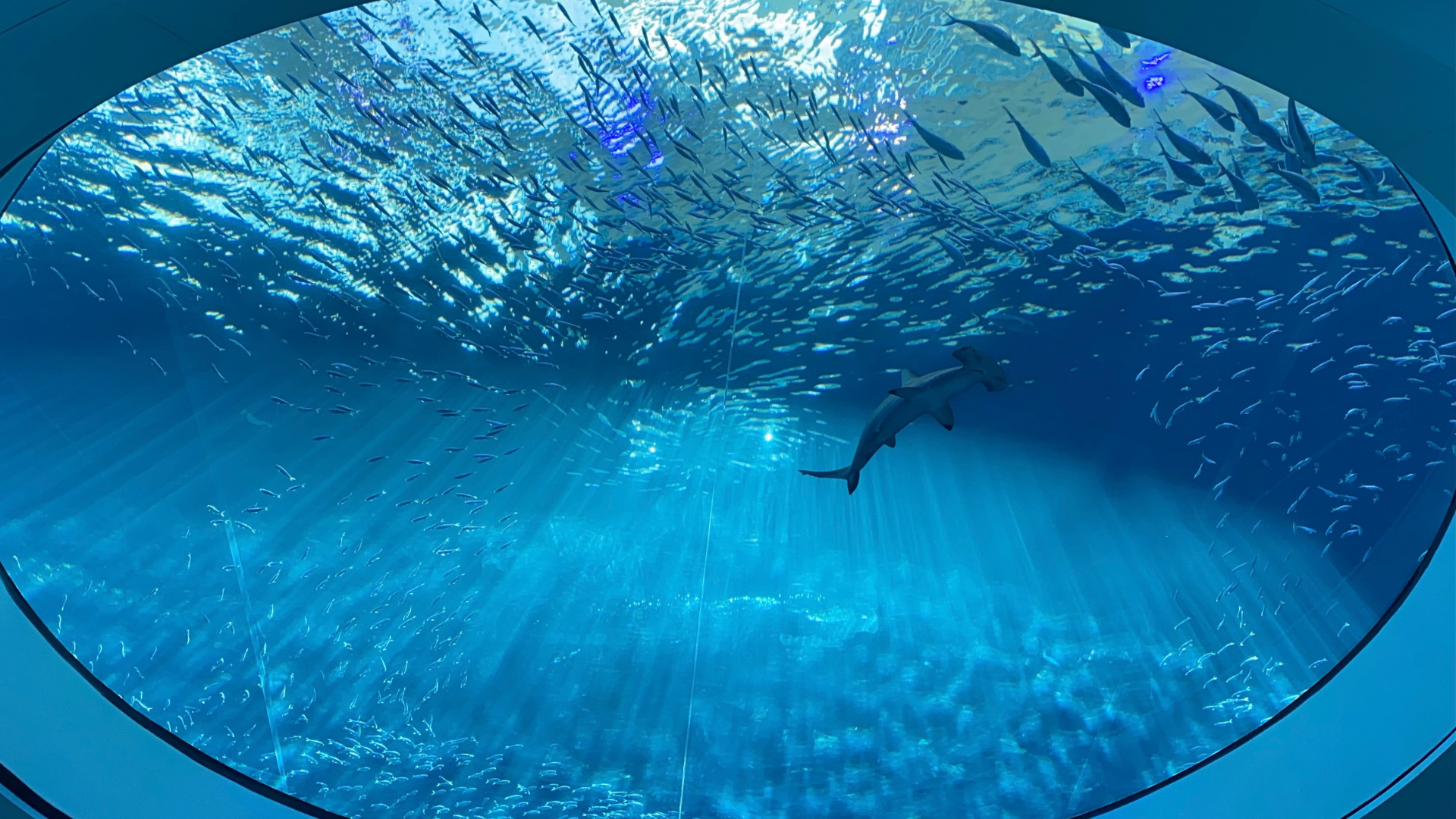
Frost Science’s three-level Aquarium is a great place to learn about Florida’s marine ecosystems and ocean biodiversity. From our huge Gulf Stream exhibit that recreates pelagic (open ocean) ecosystem along the east coast in Florida to the smaller aquariums dotted throughout The Dive level and the Great Barrier Reef exhibit in Power of Science, we have hundreds of species of marine life for you to see. And keen-eyed guests may have noticed a few changes over the past few weeks: we have some new fish!
The Gulf Stream aquarium is one place you can see the new additions. The aquarium now includes over a thousand more false pilchard (also called false herring), silvery fish each about the size of your mobile device. The pilchards, which are schooling fish, move around the aquarium together in a mesmerizing ball best appreciated—in our opinion—from the Oculus. The Gulf Stream also now contains a small group of yellowtail snapper, a common species in the western Atlantic Ocean notable for their bright yellow body stripe and tail coloration.
A view of the new false pilchards in the Gulf Stream aquarium.
You can see the rest of the new fish on The Dive level. Start at the coral tree aquarium, which contains hanging coral fragments to demonstrate how scientists grow corals for reef restoration. Newcomers to this exhibit include aptly named flame cardinalfish, a harlequin bass and a longsnout butterflyfish, which has a delicate elongated snout it uses to grab food from tiny holes in the reef and rocks. Male flame cardinalfish, on the other hand, famously use their mouths to carry their offspring until they can survive on their own. This behavior is called mouthbrooding, and all cardinalfish species are mouthbrooders.


You can round out your tour of new fish species by searching for the smaller and more cryptic blennies. The seagrass exhibit is now home to a pair of rhino blennies (also called marbled blennies), who are masters at camouflage. Finally, a small sailfin blenny now dwells in the upside-down jelly exhibit. Can you spot him? If so, you may be rewarded with a show. Male sailfin blennies use their dorsal fins to display to other members of their species and are extremely entertaining to watch.
If you spot any of these fish on your next Frost Science visit, be sure to snap a photo and share it with us on social media! We can’t wait to see your discoveries.